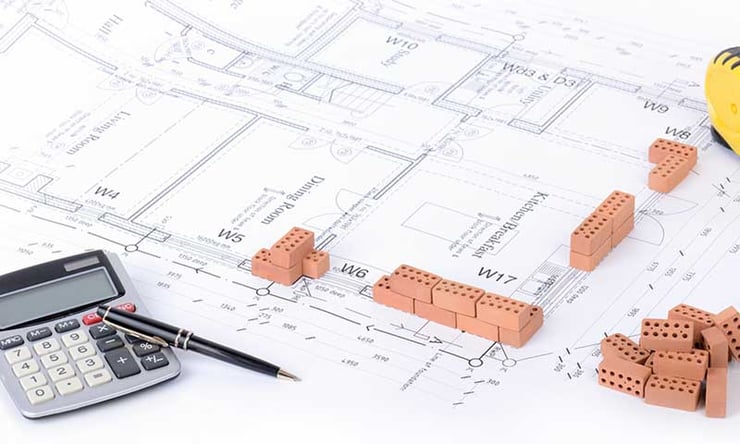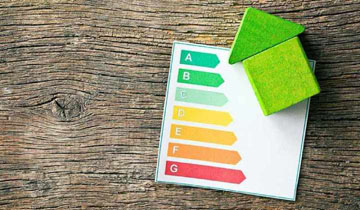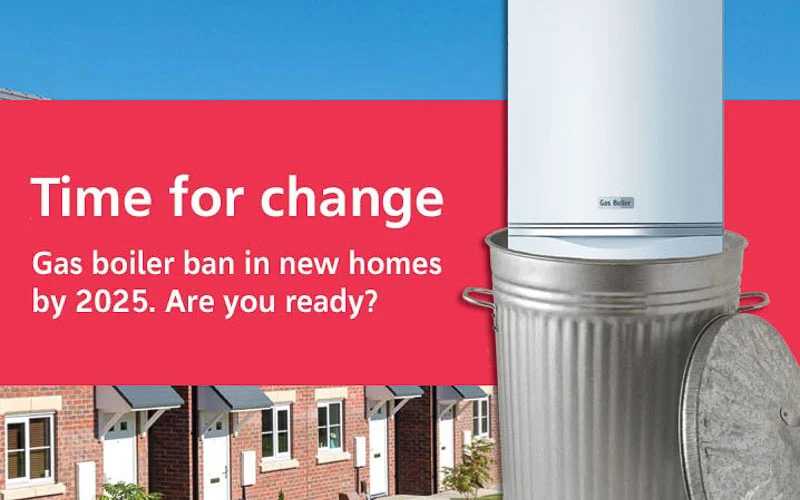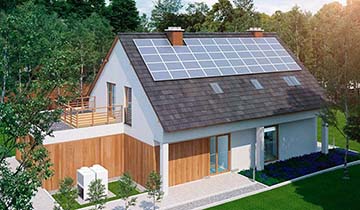3 min read
The Gas Heating Ban for New Homes and SAP 10
Here is a quick guide for everything you need to know about the government’s plan to ban gas boilers in new homes by 2025.
4 min read
 Chris Hedges
:
May 30, 2023
Chris Hedges
:
May 30, 2023

Over the next two years the government will be gearing up to overhaul the current Standard Assessment Procedure (SAP) system for assessing the energy efficiency and performance of housing in the UK.
Last time adjustments were made, the carbon factor of electricity fell massively, from 0.519 kgCO2/kWh to 0.136 kgCO2/kWh, which created a huge potential for electric heating as it helped to establish it as a low-carbon form of heating. The new updates that are currently being crafted ahead of 2025 will likely be even more impactful, drastically changing building and heating across the UK.
To get ahead of the curve and find out how SAP 11 could impact you, swot up on the SAP 11 insights below.
SAP, which stands for the Standard Assessment Procedure, was originally developed in 1992 by the Building Research Establishment (BRE) as methodology for measuring the energy efficiency of homes.
SAP isn’t itself a piece of regulation or legislation, it’s a system for measuring the different factors that contribute to the energy performance of different UK homes. It’s a tape measure, not a law.
It is, however, used throughout UK building legislation as the primary measurement methodology. For example, SAP is currently used to create the information needed for Energy Performance Certificates (ECPs), and to show compliance with the energy conservations requirements of Building Regulations Part L.
SAP 11 will be an overhauled and modernised version of the SAP methodology aiming to better reflect the current political and technological situation in the UK. It will make room for new technologies, like smart meters, heat pumps, solar panels and renewable storage, along with other developments the UK building and energy sectors have introduced over the last several years.
SAP 11 updates will allow for more accurate assessments of UK homes and will directly promote the government policy objectives for net zero, energy efficiency, and the decarbonisation of heating. For example, the Future Homes Standard is the government’s effort to ensure that all homes built after 2025 will produce 70-80% less carbon emissions. SAP 11 will be launched in time to support that initiative.

According to the Minimum Energy Efficient Standard (MEES) Regulations that were first introduced 2018, commercial rented properties could not be leased with an EPC rating of below E. However, since April 2023, the MEES has been extended to all privately rented properties, including domestic lets. It is expected that by 2025, the minimum EPC rating will be increased to C for new leases, and by 2028 for all leases – new or renewed.
The SAP 11 updates will alter the EPC rating for many rental homes, which could lead to difficulties in achieving the minimum EPC rating. According to market research, millions of properties could be made unlettable without proper investment. For retrofitting rental homes to meet these minimums, acting sooner rather than later could help save costs.

The SAP 11 consultations are currently underway, and the BRE in partnership with the Department for Energy Security and Net Zero (DESNZ), are working with a number of organisations and individuals in industry and academia to create the new methodology. A recent report, “Making SAP and RdSAP 11 fit for Net Zero,” has been released and sheds light on the potential changes and impacts for future heating. To save you reading the report, here are some potential headline changes impacting future building and heating:
Longer-term carbon factors
Another significant proposed change is to the carbon factors used, shifting them from short-term evaluations to long-term evaluations of up to 25-years. This carbon factor estimate will potentially reflect the average emissions of homes, and more accurately reflect the steady and projected decarbonisation of electricity due to increased renewable supply. This will drastically promote the use of direct electric heating and heat pump technology because the carbon factor of these two heating methods will decrease over time, whereas the carbon factor of a gas boiler will remain constant.
Residential demand side response
The new SAP proposals recommend including an output related to peak energy demand and demand side response management – similar to the National Grid ESO scheme that ran between February and March 2023. This would include a focus on smart technologies that allow homes to respond to peak energy demand by reducing their usage at peak times, allowing the national grid to become more flexible, and therefore lower carbon. A primary consequence may be the prioritising of heating methods that are compatible with, and which support flexibility. This could include zonal heating methods, like electric underfloor heating, or other direct electric heating methods that are low carbon and more responsive than gas, hydrogen, or source-to-water heat pumps.
Building form factor
Current SAP methods have consistently underestimated the space heating efficiency in new buildings. The proposed reforms aim to address this, which should lead to more accurate assessments. It could also have a knock-on effect on building form factor, i.e., surface to volume ratio, because the inefficiency of higher form factor buildings will be more accurately captured. For heating, this could mean systems that are typically more difficult to install become more popular again, because lower-form factor buildings reduce the complexity of the installation. This could help the increase in the number of difficult-to-install heat pumps.
Accurate domestic water modelling
The current SAP measurements could improve its modelling of domestic water heating, which currently accounts for around 20% of total heat demand. To get a better, more accurate picture, the SAP 11 proposals suggest including inputs for more variables. Hot water peak load demand can be up to ten times more than space heating peak demand, which may have significant impacts for water heating design. Water tanks, that efficiently store hot water for use throughout the day, can reduce peak demand and synchronise with renewable energy generation to heat outside of peak hours. Having a better SAP model for the impact of hot water storage on a building’s performance, as the proposal suggests, could lead to more immersion heaters for hot water.
Until the consultation period is over and the SAP 11 changes are finalised, SAP 10.2 will remain the standard. To learn more, sign up to our How to Specify Electric Heating CPD.

3 min read
Here is a quick guide for everything you need to know about the government’s plan to ban gas boilers in new homes by 2025.

9 min read
If you’re one of over 2 million homes in the UK not connected to a mains gas supply you know the challenges surrounding heating your home. In this...

4 min read
Launched in the latter part of 2022, the report ‘Working towards Net Zero’ sheds light on the UK construction industry’s attitudes toward direct...